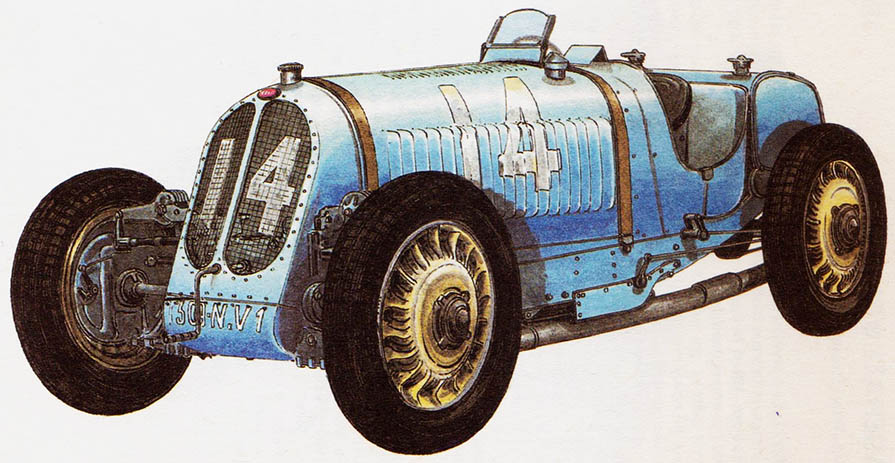BUGATTI 53 – year 1932
Automobiles E. Bugatti, Molsheim, France.
For the season 1932 Bugatti has prepared a new model, distinguished by a few interesting facts. A completely new chassis was developed with both axles driven, because the high power of the engine 220,8 kW (300 KM) it could no longer be used by propelling just one bridge. In addition to the two axle differentials, a third was introduced, so-called. interaxle. Another novelty was the independent suspension of the front axle wheels. The wheel drive was not transmitted through homokinetic joints, but long shafts terminated in a simple universal joint. It made driving a car difficult – in the words of Ettore Bugatti, the vehicle literally "wrenched the steering wheel out of hand”. For this reason, there was an accident of Jean Bugatti during training in Great Britain.

Automobiles E. Bugatti, Molsheim, France.
Model 53 had an eight-cylinder in-line engine with a displacement 4972 cm3. Moc 220,8 kW (300 KM) achieved at 4000 RPM. The two camshafts in the cylinder head were driven by a spur gears. The Roots compressor pumped the mixture to two Zenith carburettors. The crankshaft was forged from a single piece of steel and rotated in nine bearings. Oiling was carried out using the so-called. dry sump. A specially constructed one was used to transfer the driving force, powerful gearbox with three shafts. This box was designed like this, to facilitate shifting from 2nd to 3rd gear. Fourth gear was rarely engaged, mainly in mountain races, to which you originally model 53 was intended, first gear only at the start. Due to the independent suspension of the front wheels on the transverse, With the quarter-elliptical springs, the engine radiator is lowered and widened. The rear axle was of the usual structure with rotated quarter-elliptical springs. The weight distribution was calculated like this, that both axles are loaded equally when the fuel tank is full. Cast wheels with aluminum alloy brake drums had spokes in the form of turbine blades to cool the brake drums.
The chassis weight was approx 940 kg, and the car was running at top speed 240 km/h.
Model Bugatti 53 made only in duplicate, which have not achieved greater success in Grand Prix races. A similar construction, having a rear axle drive only and a three-speed gearbox, was Bugatti 54, who won in 1933 of the year in the Monaco Grand Prix race (Varzi 91,8 km/h) and in Monza (Varzi 208,04 km/h).